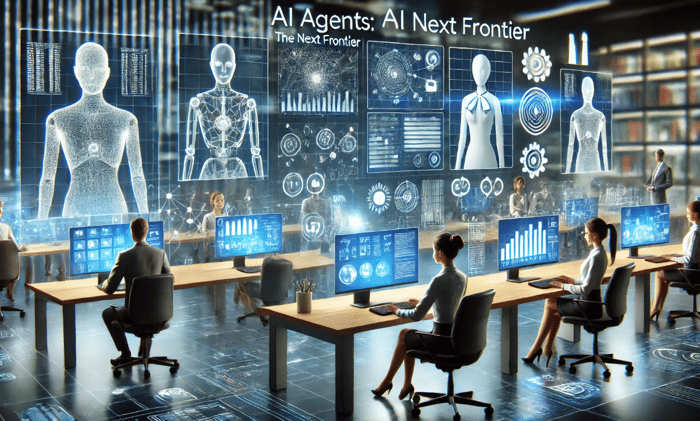The past few weeks have been a testament to the breathtaking pace of artificial intelligence (AI) advancements, with one groundbreaking innovation swiftly following another. For anyone remotely interested in tech, it’s an electrifying time. But equally, it’s a moment that calls for careful navigation.
Open Source AI: Power to the People
The most striking trend in recent AI developments is the surge in open source projects. Take HuggingChat, an open-source alternative to OpenAI’s ChatGPT, or ResearchGPT, which provides an interface to enable a conversation with a research paper. What’s remarkable about these tools is not just their sophistication but their accessibility.
The Democratization of AI
AI, once the sole domain of tech giants, is being democratized, opening up a realm of opportunities for tech enthusiasts, startups, and smaller companies. This shift in power dynamics could potentially spark an explosion of grassroots innovation and drive the next wave of AI advancements.
Why Open Source AI Matters
Open source projects are not just about making code available to everyone; they’re also about creating a community-driven approach to AI development. By sharing knowledge, resources, and expertise, open source initiatives can accelerate innovation and make AI more accessible to a wider audience.
Getting Started with Open Source AI
For those interested in exploring open source AI, there are numerous resources available online. The Comprehensive Guide to Starting, Contributing to, or Launching an Open Source Project offers valuable insights into the world of open source development.
AI Integration: The New Normal
AI is not just for techies anymore. It’s seeping into every nook and cranny of our lives, as evident from recent launches by Grammarly, Yelp, and Snapchat. These consumer-facing applications showcase how AI, from enhancing our writing to predicting our preferences, is becoming as commonplace as smartphones.
The Challenges of Seamless Integration
However, the seamless integration of AI into our daily lives isn’t without its challenges. Snapchat’s recent backlash over its ‘My AI’ feature underlines the need for transparency, user consent, and ethical considerations.
Understanding AI Integration in Daily Life
For a deeper understanding of AI integration into daily life, this article offers a great start.
AI and Hardware: An Unexpected Union
AI’s influence is also stretching into uncharted territories. Flux’s Copilot, an AI-driven hardware design assistant, is a case in point. This exciting development hints at the vast untapped potential of AI in areas traditionally untouched by it, like hardware design.
The Future of AI-Hardware Integration
This comprehensive review provides more information on the potential implications of AI-driven hardware design.
‘The AI Hot 75’ and Beyond: Future-Proofing AI
The ‘AI Hot 75’ list by NFX offers a fascinating peek into the future of AI. These early-stage generative AI companies, marked for greatness, hold the promise of driving the next phase of AI innovation.
Why We Need to Future-Proof AI
As we get enamored by the potential of these future tech stars, it’s critical to remember that with great power comes great responsibility. We must ensure that AI is developed and used in a way that benefits humanity as a whole.
The Ethical Imperative in AI’s Brave New World
The speed of AI advancements is both thrilling and unnerving. It’s a reminder of our collective responsibility to ensure that these technologies are used ethically and responsibly.
Lessons from Snapchat’s ‘My AI’ Feature
The backlash over Snapchat’s ‘My AI’ feature offers a crucial lesson in this regard. As AI becomes more deeply integrated into our daily lives, questions of transparency, consent, and privacy will become increasingly paramount.
Amazon’s Dialogue Boost: The Other Side of the Coin
Meanwhile, Amazon’s new AI-powered accessibility feature, ‘Dialogue Boost’, shows us the other side of the coin: the potential of AI to enhance inclusivity and improve the lives of people with disabilities.
Engaging in an Ongoing Dialogue About AI Ethics
In light of these developments, it’s evident that tech companies, regulators, and society at large need to engage in an ongoing dialogue about AI ethics. Resources like the Harvard’s Berkman Klein Center’s Ethics and Governance AI Initiative offer valuable insights into this critical aspect of AI advancement.
Artificial Intelligence: The New Creativity Frontier?
The intersection of AI and creativity is a rapidly evolving field. With the rise of generative AI, we’re seeing new possibilities for art, music, and literature.
The Potential Implications of Generative AI
However, as with any emerging technology, there are also concerns about the potential implications of generative AI on human creativity and employment.
Conclusion
As we navigate the breathtaking pace of AI advancements, it’s essential to acknowledge both the excitement and the challenges that come with this new frontier. By embracing the democratization of AI, addressing the challenges of seamless integration, and engaging in ongoing discussions about AI ethics, we can harness the potential of AI to create a better future for all.
Recommended Reading:




